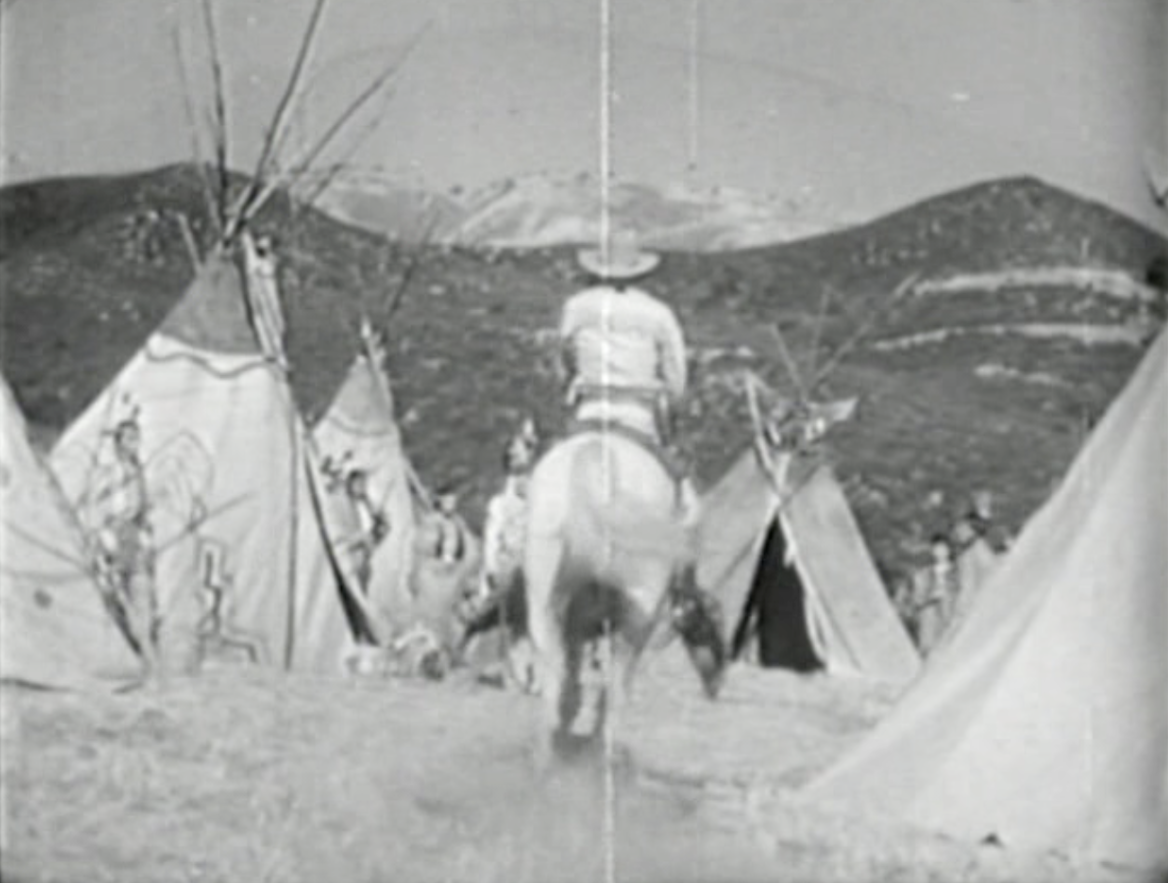"Thunder River Feud" (1942)
One pastime that evolved early in my Iverson exploration was finding weird stuff in the old movies, whether it was really there or not. I noticed a lot of what can best be described as tricks of light — images that weren't necessarily formed out of actual objects but had more to do with the way the camera played with the light and shadows. Sometimes it was just because the footage was so bad to begin with that I had to use my imagination to fill in the details — kind of like what made radio so great, according to people who lived through the days before television.
I found myself giving names to these accidents of light and imagination, because you have to name things to have a way to study them. My goal is simply to describe it as accurately as possible, so, for example, the image above from cinematographer Robert Cline's strange masterpiece "Thunder River Feud
Stegosaurus: It really exists
When I unexpectedly found Stegosaurus at Iverson, it was one of those peak moments that make exploring the place so much fun. I always assumed that what I had seen in the movie was more imagination than reality. But then there it was in real life. This discovery added a surprise twist to what I thought at the time was pure flight of fancy: Not only did Stegosaurus in fact exist at Iverson, but to my shock, I was able to find it.
It turned out to be a configuration along the face of a familiar rock in the Above Nyoka area, which formed the left side of the Vultura's Temple or Vultura's Palace feature from the Republic serial "Perils of Nyoka," released the same year as Thunder River Feud, 1942. The rock now has a brick wall built onto it, which separates the condominium community on the west side of the wall from the undeveloped area to the east. In the photo above, you can see the top of Hangdog — which formed the right side of Vultura's Palace in "Perils of Nyoka" — sticking up just above the wall.
If you're having trouble spotting the similarities between the two photos, start with the tip of the dinosaur's nose, which is the rounded shape pointing toward the top left corner in either photo. Below it is the mouth — the look of embarrassment being evident only in the screen shot at the top, not so much in the real-life photo above. A bush is growing out of the rock in the same place in both photos, near the dinosaur's eye, even though the pictures are taken more than 65 years apart — the blink of an eye, in dinosaur time.
























